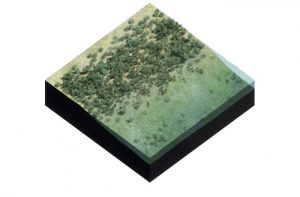Biosphere – salt marshes
Seeds and propagules: Pioneer salt marsh vegetation can establish from seeds or propagules. The most important source is a local seed bank (e.a. seed s available from natural location adjacent or at the proposed development location). If no salt marsh is present in the very near vicinity (adjacent to the proposed location), establishment will need to occur from seeds and propagules derived from other salt marshes that are not nearby but do exist in the same water system. Most salt-marsh plants disperse by water-transported seeds or propagules that can travel quite large distances. Therefore, establishment of pioneer vegetation on a new salt marsh should occur relatively fast, unless there are no salt marshes located in the system. In the latter case it might be necessary to introduce seeds artificially.
Pioneer vegetation establishment: Salt marshes can develop at places where pioneer vegetation can establish, which is governed by several factors. Seed availability, environmental conditions allowing germination, and soil stability preventing seeds/seedlings from washing away, will together determine whether a pioneer vegetation can establish. Seeds of pioneer plant species can germinate under saline conditions, although less saline conditions will increase the proportion of seeds germinating (e.g. Huiskes et al. 1985). Sowing before rainfall is therefore advised but not necessary. Established pioneer vegetation will stabilize the soil and increase sediment deposition rate from the inundating water.
Vegetation succession: Pioneer vegetation stabilizes the soil and promotes fine-grained sediment to accumulate on the marsh. Sediment deposition (together with organic carbon accumulation from the local vegetation) results in: 1) an increase in marsh elevation, 2) a reduction in flooding frequency and 3) a reduction in high stress (waves/currents) environmental conditions. All these factors promote vegetation succession (Olff et al. 1997). Plants from later successional stages (e.g. several grass species) and increased plant diversity will further enhance the stability of the soil and increase the resilience of the marsh against strong current and waves (Ford et al. 2016).

